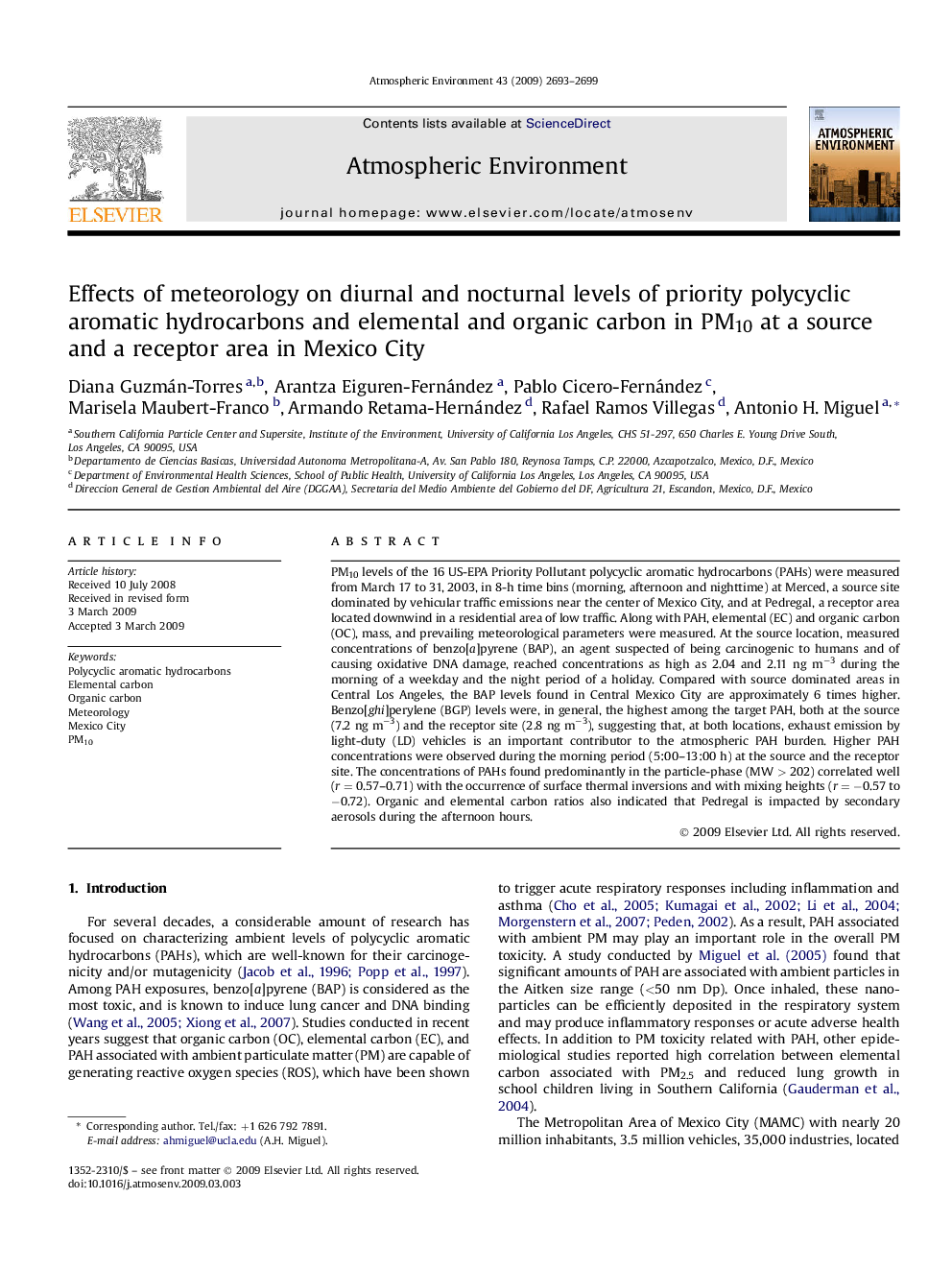| Article ID | Journal | Published Year | Pages | File Type |
|---|---|---|---|---|
| 4441938 | Atmospheric Environment | 2009 | 7 Pages |
PM10 levels of the 16 US-EPA Priority Pollutant polycyclic aromatic hydrocarbons (PAHs) were measured from March 17 to 31, 2003, in 8-h time bins (morning, afternoon and nighttime) at Merced, a source site dominated by vehicular traffic emissions near the center of Mexico City, and at Pedregal, a receptor area located downwind in a residential area of low traffic. Along with PAH, elemental (EC) and organic carbon (OC), mass, and prevailing meteorological parameters were measured. At the source location, measured concentrations of benzo[a]pyrene (BAP), an agent suspected of being carcinogenic to humans and of causing oxidative DNA damage, reached concentrations as high as 2.04 and 2.11 ng m−3 during the morning of a weekday and the night period of a holiday. Compared with source dominated areas in Central Los Angeles, the BAP levels found in Central Mexico City are approximately 6 times higher. Benzo[ghi]perylene (BGP) levels were, in general, the highest among the target PAH, both at the source (7.2 ng m−3) and the receptor site (2.8 ng m−3), suggesting that, at both locations, exhaust emission by light-duty (LD) vehicles is an important contributor to the atmospheric PAH burden. Higher PAH concentrations were observed during the morning period (5:00–13:00 h) at the source and the receptor site. The concentrations of PAHs found predominantly in the particle-phase (MW > 202) correlated well (r = 0.57–0.71) with the occurrence of surface thermal inversions and with mixing heights (r = −0.57 to −0.72). Organic and elemental carbon ratios also indicated that Pedregal is impacted by secondary aerosols during the afternoon hours.
